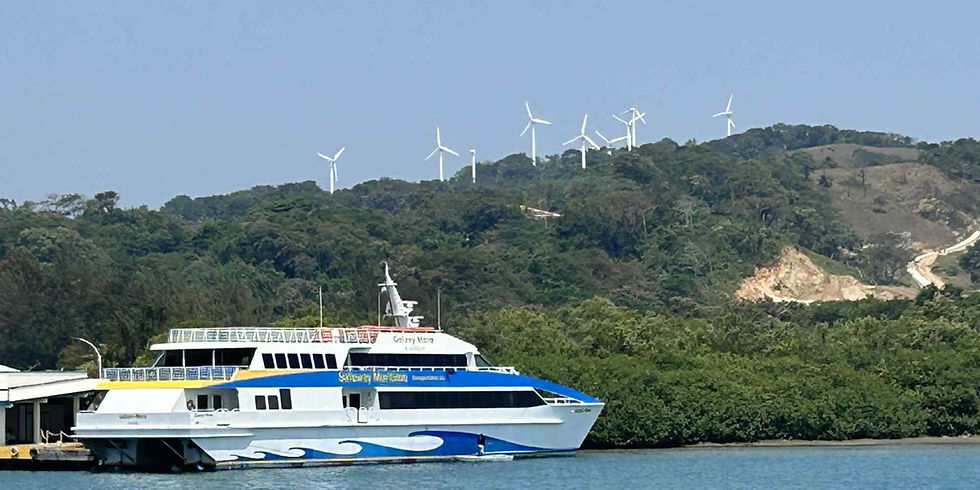Leadership Communication Training
- vwimberly

- Jul 18
- 3 min read
Updated: Jul 20

Start with One Strong Message
Vrooman calls it the “thesis zombie”—a clear, central idea that comes back again and again throughout the presentation. Buettner does this brilliantly. He opens with a question: “If you could add ten good years to your life, wouldn’t you want to know how?” Then, he anchors everything around one message: lifestyle and environment—not genes—are the key to longevity.
Every example, from Okinawan women who garden daily to Sardinian men walking steep hills and Adventists in Loma Linda who live plant-based, community-oriented lives, drives this point home. This repetition isn’t boring, it’s memorable.
Structure with Purpose
A strong presentation has a roadmap. Buettner doesn’t ramble or jump around. He introduces the Blue Zones concept, outlines his global research, and walks us through three case studies: Okinawa, Sardinia, and Loma Linda. Each location includes a cultural story, alifestyle habit, and a practical insight.This format reflects what Vrooman calls purposeful sequencing. The structure builds understanding while keeping engagement high. Buettner uses geography as a guide—his storytelling doesn’t just inform, it transports.
Clarity & Simplicity Over Complexity
Clarity is Buettner’s superpower. He doesn’t rely on jargon or overwhelm with charts. Instead, he mixes personal stories and small cultural snapshots with simple explanations of complex ideas. For example, rather than reciting research findings, he shows us elderly Okinawans laughing with friends or explains how Sabbath rest promotes wellness in Loma Linda.
Vrooman stresses this: excellent speakers know their audience and make information easy to digest. Buettner respects his audience’s time and intelligence. He simplifies, but doesn’t dumb down.
Be Present, Not Perfect
Buettner doesn’t try to impress. He speaks with a calm, steady voice, makes eye contact, and gestures naturally. Vrooman calls this “being in the room”—connecting over performing. There’s no rush or flash; instead, he builds trust by being authentic.He also avoids over rehearsed delivery. His tone is confident, but humble. He knows his material, but speaks as if it’s a conversation, not a performance.
Use Visuals with Purpose
One of the most effective aspects of Buettner’s talk is his use of visuals. He doesn’t fill slides with data or text. Instead, he uses maps, lifestyle photos, and simple graphics to reinforce his points. Each image is intentional.
Vrooman calls this “multimodal reinforcement.” Visuals should support the message, not distract. Buettner’s images tell stories and deepen understanding without stealing focus from his words.
Apply It to Leadership Training
As a leadership trainer and Blue Zones advocate, I use Buettner’s TED Talk as a teaching tool in workshops. His approach isn’t just for TED speakers, it’s a model for anyone who leads public meetings, staff briefings, or community engagement sessions. Here are six best communication practices from Buettner’s talk that I now use to coach my teams and myself:
1. Establish a Clear Thesis Zombie — Define your core message and circle back to it throughout.
2. Organize with Intention — Guide your audience logically through beginning, middle, and end.
3. Balance Story and Data — Humanize your facts with real-life stories that stick.
4. Be Present, Not Perfect — Speak with authenticity, confidence, and connection.
5. Let Visuals Reinforce, Not Replace — Use images that strengthen your message and create impact.
6. Practice Purposefully — Prepare with outlines and feedback—not to memorize, but to internalize.
These are not just tips for better slides—they’re tools for stronger leadership. Whether you’re advocating for public health, training staff, or building community support, communication is what moves people to act.
Why It Matters
Dan Buettner’s delivery works because it’s honest, clear, and rooted in purpose. As someone who often communicates challenging health data to city leaders and underserved communities in Southern Dallas County, I know how important it is to lead with empathy and precision. Buettner models how to do both.
His TED Talk doesn’t just inform—it transforms. That’s what leadership communication should do.
If we want to motivate people, we have to be more than messengers—we must become storytellers, guides, and trusted voices. Buettner reminded me that the heart of communication isn’t just what we say, but how it makes others feel, think, and act.
References
Buettner, D. (2009, September). How to Live to Be 100+ [TED Talk].https://www.ted.com/talks/dan_buettner_how_to_live_to_be_100
TED. (n.d.). TED Talks Speaking Rubric.https://www.ted.com/topics/ted+talks+speaking+rubric
Vrooman, S. (2015). The Zombie Guide to Public Speaking. Fountainhead Press.
Vrooman, S. (2020, June 15). How to Get Online Speaking Right. Cognition Speaking.https://cognitionspeaking.com/how-to-get-online-speaking-right-part-1/






Comments